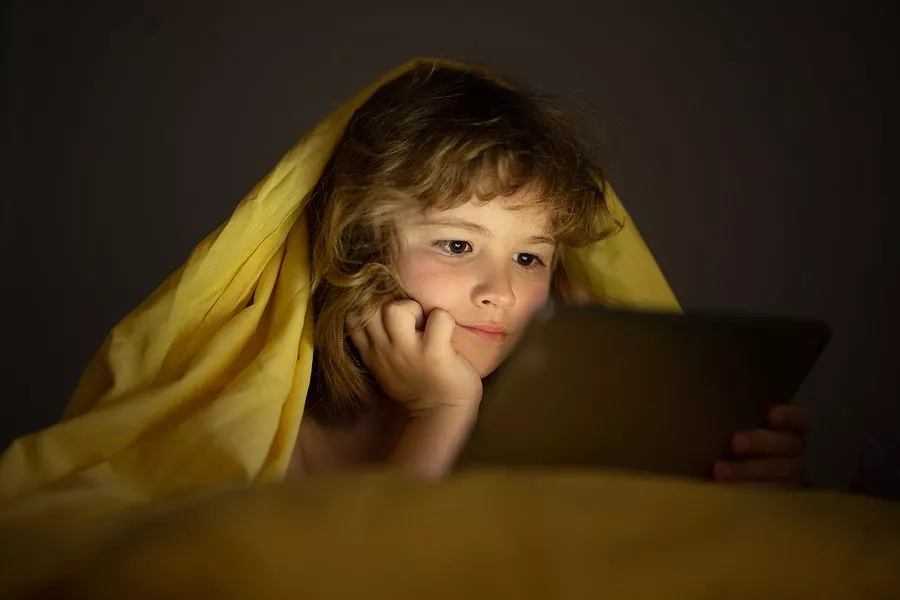Kids today grow up on screens. Preschoolers utilize tablets, learn their ABCs from computers, and start learning the layout of a keyboard. Before that, they’ve likely played on other devices at home. We are in an age when most college graduates weren’t schooled in cursive writing, and likely never wrote a school paper in ink.
The internet has always existed for these kids, and social media access was readily available by the time they reached the required age of 13 to create an account. A parent survey, however, revealed that half of kids ages 10 to 12 and 33% of kids 7 to 9 years old use social media apps.
How Does Social Media Affect Children?
What is all the fuss about? It seems everyone is on social media in today’s modern age, including parents who are modeling behaviors for their children. There is good news and there is bad news. The good news is that social media has been around long enough that multiple studies show how it affects society, and especially kids and teens. The bad news is that the results of those studies aren’t good.
Does Social Media Have a Negative Impact on Kids?
The short answer is, too much time spent on social media is harmful, and can be dangerous for kids and teens. According to the Cleveland Clinic, kids as young as 11 who have Instagram and Snapchat accounts are more likely to have problematic digital behaviors that can make them vulnerable to online harassment.
They easily make online-only friends, and studies show they are more likely to visit sites parents disapprove of. Screen-heavy pre-teens and teens are also susceptible to increased anxiety and low self-esteem.
Kids and Social Media Dangers
In addition to the horrific incidents we hear on the news about cyberbullying, online predators, dangerous viral trends, and more, more specific behavioral dangers are at play with excessive screen time.
For example, during the pandemic when social media usage was at an all-time high, and in other cases when teens spent multiple hours per day on Tik-Tok, a movement disorder phenomenon took place among teen girls.
Suddenly, doctors from all over the world were seeing an onslaught of teen girls with a sudden onset of verbal and physical tics, much like the tics observed with Tourette’s Syndrome. These teens were all following the same Tik-Tok accounts, and their tics were all the same.
Luckily, there was no cognitive damage to the brain, but the tics were a physical response to stress, versus something like a negative thought.
The bottom line is that kids and teenagers who spend an excessive amount of time on social media are more likely to experience adverse mental, emotional, behavioral, and even physical challenges.
Many kids are drawn toward social media. If they aren’t, they still play on screen. They “hang out with their friends” on streaming services. They do their homework on computers. When their educational pursuits and social activities take place online, what could lure them away?
Sports to the Rescue
Who hasn’t heard a Baby Boomer parent talk about how when they were kids, they were sent outside to play and told not to return until the streetlights came on? Generations of kids spent much of their time outside, and many of them participated in sports.
The effects of sports and physical activity on kids have been studied nearly as much, if not more, than that of social media. Some of the benefits are in direct opposition to the challenges created by social media. According to the President’s Council on Sports, Fitness & Nutrition Science Board, the list of mental and physical health benefits is lengthy.
Mental and Physical benefits of sports on kids |
|
|---|---|
| Mental Health Benefits | Physical Health Benefits |
| Lower rates of anxiety and depression | Improved bone health |
| Lower rates of stress | Improved weight status |
| Higher self-esteem and confidence | Reduced risk of cancer and diabetes |
| Reduced rate of attempted suicide | Increased cardio and muscle fitness |
| Less substance abuse/fewer risky behaviors | Increased physical activities |
| Increased cognitive performance | Improved cardiovascular fitness |
| Increased creativity | Decreased body fat percentages in girls |
| An appreciation of physical activity | Increased overall quality of life |
| Improved well-being for those with a disability | Increased life satisfaction |
Kids and Social Media
Social media and other forms of screen time certainly have their place in society. It’s the amount of time spent in front of a screen that creates possible negative effects. What is certainly clear is that physical activity, such as participation in a sport or exercise, may be just what is needed to counteract or prevent the negative impact of too much screen time.
When we leverage social media usage to create positive and real connections between people in the real world, we then see the clear benefits of these tools. This, in conjunction with a sport such as Ski & Snowboard, can forge friendships that can last a lifetime.
Kids, Social Media… and Sports!
Shredder Ski & Snowboard School provides Ski & Snowboarding lessons to kids and boys of all ages, adults are included too! You can pick from a wide array of services and levels, from complete beginner to full pro, to start seeing the benefits of a sport.
Forming and cultivating these kinds of healthy habits, while understanding that we do not have to be enemies of social media, can be the correct formula to the society we’re living in. If any of this resonates with you, do not hesitate to contact us for indoor ski & snowboard lessons!

